|
We have launched a new course recently together with Josh Gambrell, titled Scifi Weapon design in Blender. The course has 26h+ of video content, there are 2 weapon designs, one from each of us, and tons of bonus features, like for example a free exclusive decal pack, Decal Machine ready, and several videos discussing free add-ons not native to Blender, such as Machin3 Tools, Mira Tools and Power Save.
The course is available on: 1. Gumroad 2.Blender Market 3. Udemy Hope to see you there! I have finished working on the robotic arms engineering station yesterday, and dropped it on my portfolio and stores. I used this model 3 months back for creating a large scifi environment concept scene. The new version has cleaned up geometry, objects split for easy texturing and animation, I unwrapped the UVs, and made sure that the mesh is manifold. It is a medium poly level model, with around 200k tris and 100k verts. Available on all of my stores Then I thought that it would be fun to actually animate those arms, and put the whole rig in motion. I created a short video that showcases the model from all angles and helps to visualise arm movement. Hope you guys like it! I thought about it a lot, and wanted to do it for years, but never had the time to properly focus on 3D. June of last year I finally decided to take a proper 150% full on dive into the world of 3D modelling. My focus is be sci-fi, hard surface, possibly with some occasional organic sculpting, but only as a mean to an end of creating hard surface sci-fi art. I am currently working in Blender, using tons of add-on, but mainly Hardops, Boxcutter, Mesh Machine, Machine Tools, Decal Machine, Kitops and Mira tools. I am building my 3D art folio, which you can see on my pages on ArtStation and Smugmug, I am creating assets and models for games, movies and individual clients; you can find some of them on my stores, on Gumroad, Artstation, CGTrader and BlenderMarket. I am also involved in a massive 3D art related project, which should materialise mid of this year, so I will be able to share more details in regards to that later on. Furthermore, you may soon see new videos showcasing my 3D art and Blender / Hardops, etc. tutorials are coming at some point. Time is tight, and 24h is not enough, but what we need to soldier on!
Blog was quiet for some time now, but I will try to keep you guys updated on what is happening a bit more often. I have a very simple approach to fine art nude photography. I listen, observe and adjust, and then I imbue it with my own artistic style. Every woman has a different body language simply because they all have various personalities and life experiences. Psychologically they are all unique. On the other hand, there share many similarities. But knowing those is nowhere near enoguh to be able to create truly beautiful, sexy and at the same time sensual and delicate images. You have to understand how women react, what they react to, what makes them wonder, what throws them off, or even what allures them. Woman can go through a range of emotions during one morning equal to what an average man can cope with throughout a 10 year period. Their emotional spetrum is not only wider, but also much richer and way more unpredictable. So again, watch and learn, experience and remember, or better still try not to forget. Most images captured by men will not appeal to women, or at least not that easily or not in a way it was intended. One issue is that photographs that guys take are way too obvious, they simply mimic bioogical mind set up of a man, which is based on shortcuts. Those are both visual and emotional shortcuts. Shortcuts are for those who don't like puzzles, have no patience for sharades, and cannot be bothered with voicing their feelings. Men want visuals, women desire getting lost in words men want to touch, women like to evade, men want to act, women prefer to react. There is a brilliant saying that goes: if a woman isn't late it means she isn't coming at all. Think about it. My advice is thus. Try to forget what you want to see, and try to feel what she would want to express. A nude photograph should be like a good conversation. There are things that will remain unsaid, even though we may imagine what they are, things that could have been heard if you listened closer and paid attention, or simply - cared. Focus on the general beauty of female body not the parts of it, you are not shooting a car. Most importantly, you will have to learn how to break the personal barrier without making your model feeling uncomfortable. Body language does not lie. Those photographs should look like as if she took them alone in her room, completely oblivious and relaxed. If you can tell from the mood in the image that there was someone else in the room taking photos, it is not going to be enticing enough, well at least to a woman. The simplest way to think about fine art nude photography whenever you photographing women is to shoot for them and not for yourself. Your style is essential, because you are in charge of the lights, depth of field and all that technical malarkey. Those are your images, yes, but it is not your body, not your soul, and not your sexuality. If you manage to dress your nude model in the attire of who she really is as a woman, and have her feel complete when she looks at her own images, then and only then you can call it fine art nude photography.
Contact me directly for one-to-one online photoshop tutorials via desktop sharing. Portrait photography service, Tokyo - website http://www.portrait-photography-tokyo.com/ Photography workshops in Tokyo: http://www.ryuurui.com/photography-workshops.html Hire a photographer in Tokyo: http://www.ryuurui.com/hire-a-photographer-in-tokyo.html Photo blog: http://www.japan-in-photography.com/ Facebook: https://www.facebook.com/ponteryuurui Twitter: https://twitter.com/PonteRyuurui Google+: https://plus.google.com/u/0/+PonteRyuurui/posts For more tutorials and how to videos check out my photoshop and photography tips and tricks YouTube channel: https://www.youtube.com/channel/UCEOVGZ2rpLhR7gSPvaexxxQ Oh I have been thinking of doing this for some time now, so i finally got myself to do it. You can merge any type of art together, as long as the general feel of the final result remains consistent artistically. If you think of combined visual art as music, then you can play any notes as long as it does not sum up to cacophony. So, Chinese calligraphy and tribal African motif. Well, I had to think of the script first. I was leaning towards oracle bone script, naturally, which currently is known as the oldest scripts in Chinese calligraphy. Its raw and pictographic appearance, as well as rough uneven and sort of primordial looking strokes that form individual characters would suggest it to be the best choice. Then I also thought of great seal script, bronze inscriptions in particular, since they also ooze with ancient energy. But then I thought of ancient clerical script which is simply superb. It is much older than other two scripts, but it has this amazing quality of shredded uneven and unpolished line. To anyone not acquainted with the art of Chinese calligraphy it may seem too chaotic and random, but it is simply sensational. It has this amazing unstable energy of order in mayhem. It is hands down one of my favourite scripts in history of Chinese writing. History of ancient clerical starts around 5th century B.C.E. and if you are interested in reading a bit more on Chinese calligraphy scripts, you can find my in-depth articles on the subject here. For this full body art photo shoot I picked random texts from bamboo slips, I was more interested in matching the styles and quality of lines rather than bothering with consistency in meaning, which would be a difficult task anyways since bamboo slips contained rather short messages, and most of them was related to administrative tasks and duties of clerks and officials. Beauty of Chinese calligraphy is not about what is written anyways, but the game of lines and their relation to the background and space management. It is a bit like with poetry, you are not supposed to translate it and analyze like those morons teach you at school, but appreciate it with all of your senses intuitively, and without applying any mathematical equations. Contact me directly for one-to-one online photoshop tutorials via desktop sharing.
Portrait photography service, Tokyo - website http://www.portrait-photography-tokyo.com/ Photography workshops in Tokyo: http://www.ryuurui.com/photography-workshops.html Hire a photographer in Tokyo: http://www.ryuurui.com/hire-a-photographer-in-tokyo.html Photo blog: http://www.japan-in-photography.com/ Facebook: https://www.facebook.com/ponteryuurui Twitter: https://twitter.com/PonteRyuurui Google+: https://plus.google.com/u/0/+PonteRyuurui/posts For more tutorials and how to videos check out my photoshop and photography tips and tricks YouTube channel: https://www.youtube.com/channel/UCEOVGZ2rpLhR7gSPvaexxxQ Posing is such a broad term, abused, feared, and totally misunderstood. How do I pose models for portraits - this is the most common question I get during photography workshops. And my answer is - I don't. Imagine that your model is a prey and you are the hunter. What you are hunting are her emotions, moments she forgets she is being photographed, gestures evoked by memories, thoughts in her eyes, the way she moved her head to fix her hair, eyes running away briefly to yesterday's events, in short you are hunting for anything and everything, but nothing in particular. You are stalking her for a perfect synergy between light, background and foreground elements, and body language. That is where you press the shutter. By posing a model the way you want you will ruin her natural way of positioning, moving, influence her face expressions possibly in a negative way which will make her look fake or uncertain. Instead let he do freely what she wants with her body, then sit back and observe. Once you learn their body language and get to know their personality, then you can start fixing slight issues that you see through the view finder before shooting. This is what I mean by saying that you should pose yourself instead of posing the model. You should find the spot that is perfect for shooting a particular mood in certain lighting conditions by simply moving around and searching. She is the Sun, you are the planets. Move. This does not mean that I do not give instructions and ask my models to do certain things, move this or remove that, curve, bend, whatever I need her to do really to complete my composition. I search not for a perfect but natural and undisturbed energy flow throughout the image. That is what I pose. I do not pose the model, I pose myself so the lens shows me a fluid and beautifully lit image with relaxed body language.
Contact me directly for one-to-one online photoshop tutorials via desktop sharing. Portrait photography service, Tokyo - website http://www.portrait-photography-tokyo.com/ Photography workshops in Tokyo: http://www.ryuurui.com/photography-workshops.html Hire a photographer in Tokyo: http://www.ryuurui.com/hire-a-photographer-in-tokyo.html Photo blog: http://www.japan-in-photography.com/ Facebook: https://www.facebook.com/ponteryuurui Twitter: https://twitter.com/PonteRyuurui Google+: https://plus.google.com/u/0/+PonteRyuurui/posts For more tutorials and how to videos check out my photoshop and photography tips and tricks YouTube channel: https://www.youtube.com/channel/UCEOVGZ2rpLhR7gSPvaexxxQ Kids learn quick, don't they. Their brains are like sponges, true, but it also has to do a lot with how they learn. At the youngest age all children learn through play and fun activities. Otherwise they get bored, their attention span is very short and it has to be maintained and kids need to be constantly intrigued. Well, guess what, you can do that at any age. When I was a kid I loved to play with LEGO, I could spent hours and hours creating stuff. Photoshop is just like LEGO for me. I will use all and any elements, apply no rules and go full monty with its tools. Photo editing can have many forms, sometimes you need to create a more serious and realistic image, but there are times when you can cut loose and make something cool. And the only person that can stop you is yourself. Photoshop manipulations are amazing for learning and mastering photoshop and therefore mastering the art of photo editing. It is not about achieving realistic look, but about doing what YOU want and what YOUR imagination whispers to you. If you can do whatever you wish with an image, then any type of image or work that is thrown at you will be a piece of cake. Photoshop is not a superbly complex program, what is difficult about it is virtually unlimited combinations of tools and their usage. Photoshop tools applied in certain order with certain settings is the key to true mastery. Knowledge of tools and what they do will only get yo started. It is about what to do, when and in what order while being able to predict the outcome. On the other hand, through photoshop manipulations and compositing you will discover, accidentally or via research, new and amazing ways of working on photos. This program is like a jungle, no matter how basic photoshop video or tutorial I watch there is almost always something new that I discover. Take frequency separation for instance, which is a technique of splitting textures and tones into different layers, it is mostly used in portrait editing. But there are many ways of using frequency separation and there are numerous types of it. I use it in nearly every photo I work on, be it portrait, architecture, night photography, or compositing. Each of those types of frequency separation produces the same result, more or less, but could inspire your mind to come up with your own variations that could be applied in different situations. Photoshop manipulations will require you to scout the net for specific solutions, help you to find sources of stock images, perhaps even push you to enjoy new artistic areas, such as 3D. Not to mention that you will create some sick images for your models' and your own folio. Photoshop manipulations will also make you a better photographer, they will inspire you to shoot specific images for ideas that you or your model come up with. You will have to think how to set the lights to match light on stock photos or vice versa, which will watch you deconstructing images. How to pose, what props you need and what props you can photoshop in, etc. You will have to compose your images, which will develop and enrich your understanding of composition and balance in the image. By painting shadows and highlights by hand in photoshop you will truly understand how light works, which is so important. Photoshop is an endless source of skill improvement, however you look at it.
Contact me directly for one-to-one online photoshop tutorials via desktop sharing. Portrait photography service, Tokyo - website http://www.portrait-photography-tokyo.com/ Photography workshops in Tokyo: http://www.ryuurui.com/photography-workshops.html Hire a photographer in Tokyo: http://www.ryuurui.com/hire-a-photographer-in-tokyo.html Photo blog: http://www.japan-in-photography.com/ Facebook: https://www.facebook.com/ponteryuurui Twitter: https://twitter.com/PonteRyuurui Google+: https://plus.google.com/u/0/+PonteRyuurui/posts For more tutorials and how to videos check out my photoshop and photography tips and tricks YouTube channel: https://www.youtube.com/channel/UCEOVGZ2rpLhR7gSPvaexxxQ Fine art nude photography is hands-down one of the most difficult types of photography out there. There many factors that have to play in harmony together for the final image to be sensual, powerful, intriguing, natural and sexy at the same time. Your first barrier is your attitude as a photographer or an artist (or both in one, preferably). Model not only has to trust you implicitly, but she also has to feel completely relaxed and safe. Her body language has to be fluid and tension free, otherwise you are both wasting your time. If you work with professional nude models then they are used to posing nude and some of them are more comfortable nude than posing to portraits. But don't be shy asking models, who even specify in their folio or website that they do not shoot nudes, if they would be interested in such photoshoot. Remember that women (especially attractive women) are bombarded with all kinds of advances on a daily basis. Most of those advances are shocking or just plain sloppy, so naturally their defense and self preservation instinct kicks in, and rightly so. So what can you do then. Build your folio with quality images only: solid composition, good lighting and skilled editing. Those do not have to be nude shots, just images that will tell the model what type of person you are, what artistic sensitivity you have, and what drives your passion for photography. Let your images talk for you. If a model likes your photographs she will most likely be interested in working with you. Then make an effort to look through her folio and see what she likes. Ask her to send you sample images from the net or her own, so you can learn what is appealing to her. I cannot stress enough how important that is. Get to know your models' personality. It not only is essential for you to understanding them, but more importantly shows that you actually care about them as human beings, and not just as a subject for the lens. Then just ask her if should be keen on shooting portraits or street fashion, which will give you a chance to meet and connect. When you meet in person you have a ground to judge when (or if) is the right moment to ask her about a nude shoot. Remember, it is not what you say but when and how. Make absolutely clear what is the purpose of the shoot, how you will use the images and what images you will be publishing and where, and what she is getting out of it. Whether it is money or photos, you have to be clear about it. Just put all cards on the table so there is no guessing or misunderstandings. Do not surprise them with something they did not expect during the shoot. In best case scenario it will create a barrier and you will have to deal with fake and stressed body language. Remember they are nude, respect that. Next, you should have some knowledge of human anatomy and how light can affect it. Learn how muscles move and align, how body moves, what poses or angles are in symbiosis with give type of light. Watch professional dancers in slow motion and see how graceful their movements are. Observe women on daily basis and learn, how they react, what they do with their hands, how they tilt heads and what emotion caused it, how they smile or fall deep into thoughts. Those emotions can be evoked or ruined by words. Choose them carefully. You will be posing the model, yes, but photos should appear not posed and natural. Real life reactions are your best school of what is natural, but there are other sources of inspiration. Try to deconstruct fine art nudes from world class photographers (they don't have to be famous, they just have to be bloody good), especially the light and how it falls. Watch how women photographers capture nudes, they have different sensitivity and you can learn a ton. Unlike dancing, the trick here is to capture that balance in a single frame, a frame that is still, and viewer's eye has to glide through the image without abruptly colliding with composition issues. Stop thinking like a man, start feeling like an artist. If you really passionate about light and shadows, forms and creating, you will forget you have a nude model posing for you. You will need at least basic understanding of how light works and what can be done with it. In fact becoming obsessed with light is your aim. For me nude photography is all about game of shadows. I do not see body parts, I see lines, shapes and the power of composition. Imagine that light falling on model's skin is like lingerie. Dress your model with it in away that she is sexy as hell but sublime and feminine, she doesn't excite but intrigues and stuns, she is not revealing but alluring, she ceases to be a model and becomes a wonder of light and shadows. Contact me directly for one-to-one online photoshop tutorials via desktop sharing. Portrait photography service, Tokyo - website http://www.portrait-photography-tokyo.com/ Photography workshops in Tokyo: http://www.ryuurui.com/photography-workshops.html Hire a photographer in Tokyo: http://www.ryuurui.com/hire-a-photographer-in-tokyo.html Photo blog: http://www.japan-in-photography.com/ Facebook: https://www.facebook.com/ponteryuurui Twitter: https://twitter.com/PonteRyuurui Google+: https://plus.google.com/u/0/+PonteRyuurui/posts For more tutorials and how to videos check out my photoshop and photography tips and tricks YouTube channel: https://www.youtube.com/channel/UCEOVGZ2rpLhR7gSPvaexxxQ It is simple - as far as you fucking please. Why? This is also simple. Photo retouching is a form of art. Saying that photo is over retouched is like saying that a given oil painting has way too many layers of paint. A painting has as many layers as the painter sees it fit. Some paintings are better some are not that amazing but after all it is down to the artist and his or her skills and imagination to decide how far to go, what to paint, what colors to use and what story to convey. The only thing that matters is what you as the photographic artist or retoucher feel. Those feelings will guide you through the retouch. So now the question is why we hear so often that "this photo is over retouched", "it does not look real", or some similar rubbish. This is also quite straight forward. Most people are like sheep, they follow what the rest things is "proper", "correct", "commonly accepted". Fuck proper. How are you expected to grow if you stay within the frames of proper. Yes you should study, and yes you should evolve and constantly search for better, balder and grander than yourself. But you won't be able to if you enter the confined zone of "I really think I should not do this". Also remember that majority of photographers are just photographers, they are not artists. They will never understand it. Ever. It is beyond their RAM memory range. They simply do not compute. Whether it is a skillful retouch or not, well that is another story. One thing is for certain, if you stay in your comfort zone as an artist you will never grow, and your works will become dull and uninspired. Trying new things cant be daunting but it pays off. It does not mean that you have to bring each image to the extreme, I sure don't. On the contrary. As I said, it is up to how you feel about it at a given moment. Be it when shooting, or retouching, or perhaps a year later, as I did with this image that you can see in the speed art photoshop retouch video below. Photography is not about documenting the world, it is about capturing the energy and feelings, moments, stories, and so on. But this is just a beginning. What you cannot capture with your camera, but wish you did or simply you saw something in the image that inspired you, then by all means go for it. Retouch your heart away in photoshop, that is why it was created. Then you have photoshop manipulations, digital painting combined with compositing, 3D art with photography, the sky is the limit. People will always be resilient to appreciating something abstract. Most people cannot process it. Do not be like most of people. Be unique, like no one else can. Be you. Contact me directly for one-to-one online photoshop tutorials via desktop sharing. Portrait photography service, Tokyo - website http://www.portrait-photography-tokyo.com/ Photography workshops in Tokyo: http://www.ryuurui.com/photography-workshops.html Hire a photographer in Tokyo: http://www.ryuurui.com/hire-a-photographer-in-tokyo.html Photo blog: http://www.japan-in-photography.com/ Facebook: https://www.facebook.com/ponteryuurui Twitter: https://twitter.com/PonteRyuurui Google+: https://plus.google.com/u/0/+PonteRyuurui/posts For more tutorials and how to videos check out my photoshop and photography tips and tricks YouTube channel: https://www.youtube.com/channel/UCEOVGZ2rpLhR7gSPvaexxxQ Portrait photography is extremely intimate and that is why it can be intimidating, scary even. Most people feel butt naked when they are being photographed. This is a reason why you see so many fake looking and tense face expressions on portrait photos. As a portrait photographer I have to enter a private zone of my model, and connect with them emotionally. Trust is and feeling of safety and relaxation is essential for capturing great portraits. time is limited and no matter what I have to get through to them. There is no recipe or specific things that you can say to make it work. Asking people to smile to the camera is like asking a girl if she wants to kiss. You do not fucking ask, you make it happen and keep your feelers on the right moment. You ambush the shit out of your models with your genuineness, wit and spontaneity. It is actually in tune with how photographs should be taken. You react to light, how it falls and how it changes the shapes. you should feel when to click not think when to click. Evoking or being able to capture honest reaction or emotion is, regardless whether it is a smile or a disconnected far stare, is probably the most important key element in portrait photography. It will define fluidity of body language and the energy flow throughout the photo, only enhanced by the aesthetically logical connection between the elements of the composition. It is not about what you say, but how and when. That is really vital. Human face has 43 muscles. That is a lot of strings to pull, and they all have to be activated naturally and and stay interconnected or entangled with the emotion. It is a symphony of all face features that creates an expression the viewer can relate to, an expression that speaks for itself. If you want to capture smile or laughter, make it so that whoever looks at the photo smiles back.
Contact me directly for one-to-one online photoshop tutorials via desktop sharing. Portrait photography service, Tokyo - website http://www.portrait-photography-tokyo.com/ Photography workshops in Tokyo: http://www.ryuurui.com/photography-workshops.html Hire a photographer in Tokyo: http://www.ryuurui.com/hire-a-photographer-in-tokyo.html Photo blog: http://www.japan-in-photography.com/ Facebook: https://www.facebook.com/ponteryuurui Twitter: https://twitter.com/PonteRyuurui Google+: https://plus.google.com/u/0/+PonteRyuurui/posts For more tutorials and how to videos check out my photoshop and photography tips and tricks YouTube channel: https://www.youtube.com/channel/UCEOVGZ2rpLhR7gSPvaexxxQ Color toning is usually one of the final touches that I am adding to the photo during editng process in photoshop. Sometimes, however, I will perform color toning more than once during different stages of editing, or stack effects one on another. The key here is not to change the colors of the photo, but to change the mood and make it fit and complement the face expression of your model, the scene, the weather, and bring all elements of the photo together in order to write final page of the story you are trying to convey with the image. When I color tone a portrait photo, I look at model's body language and its energy. I look at the background and details around the model and instinctly know which direction to go. Think about it in terms of a movie. If you watch a comedy, color toning is usually bright and saturated, in horror movies, war movies or dramas things will be desaturated and gloomy on purpose to emphasise the setting, in sci fi movies usually (though not always) you have crips and sharp contrast and toning, in adventure movies toning will complement the folliage and the environment. The same goes to portrait shots. The photo you see in this article was shot at the seaside in the evening, it was past the sunset. I used one flash to lit model's face and toned down light spill around her in Adobe Camera RAW before bringing it to photoshop. Color toning was performed twice, I started with applying modified filter from Google Software Analog fx pro collection to shift the colors, and then after I finished editing I used curves, gradient maps and solid color filters to amplify the effect. I was going for a quiet yet not so desaturated colors. I did not want colors to be too mellow but at the same time I needed some degree of saturation to add warmth and feeling of peace and tranquility to the image. Editing images is massively important bu it can be broke down to multiple satges, whcih is why if you want to do a good job on editing a portrait shot, you mshould really take your time. Do not be affraid to experiment. Yes it will take you longer to finish the photo, but think how much you will learn. You can learn a LOT about photography composition through photo retouching, and color toning plays a massive part those studies. If you would like to see how I tone one of my images, I have a full length portrait photo editing photoshop tutorial on my YouTube channel, you can jump directly to photo toning at 30:07 Contact me directly for one-to-one online photoshop tutorials via desktop sharing.
Portrait photography service, Tokyo - website http://www.portrait-photography-tokyo.com/ Photography workshops in Tokyo: http://www.ryuurui.com/photography-workshops.html Hire a photographer in Tokyo: http://www.ryuurui.com/hire-a-photographer-in-tokyo.html Photo blog: http://www.japan-in-photography.com/ Facebook: https://www.facebook.com/ponteryuurui Twitter: https://twitter.com/PonteRyuurui Google+: https://plus.google.com/u/0/+PonteRyuurui/posts For more tutorials and how to videos check out my photoshop and photography tips and tricks YouTube channel: https://www.youtube.com/channel/UCEOVGZ2rpLhR7gSPvaexxxQ I meant to post this earlier on, in fact I should have done so since the article was published last months, but it is better later than never, as they say. I always write about photography (mainly portraiture), photo editing, photoshop manipulations, Japanese and Chinese calligraphy and so on, but my "about" page is rather short and I never really felt the necessity to write more about myself. Well, luckily, the article in Portfolio Magazine does that for me. Here is a direct link to the article. And here is a link to the entire issue in which the interview was published, in case anyone was interested. Many thanks to Emilions Art and Bill Hemmer at Portfolio.
Contact me directly for one-to-one online photoshop tutorials via desktop sharing. Portrait photography service, Tokyo - website http://www.portrait-photography-tokyo.com/ Photography workshops in Tokyo: http://www.ryuurui.com/photography-workshops.html Hire a photographer in Tokyo: http://www.ryuurui.com/hire-a-photographer-in-tokyo.html Photo blog: http://www.japan-in-photography.com/ Facebook: https://www.facebook.com/ponteryuurui Twitter: https://twitter.com/PonteRyuurui Google+: https://plus.google.com/u/0/+PonteRyuurui/posts For more tutorials and how to videos check out my photoshop and photography tips and tricks YouTube channel: https://www.youtube.com/channel/UCEOVGZ2rpLhR7gSPvaexxxQ I was inspired to write this article by the youngest photography student of mine - 11 years old Hanaka from Tokyo. She came together with her father, Lloyd, who must have noticed her interest in photography or art in general and did what all parents should do - let the child pursue their passion and help them in their search for identity. If you are reading this and have kids then take notes, because this is what parenting should look like - there has to be a balance between showing the right way (which kills the child inside us) and letting your children discover themselves. There is a difference between parents who want their child to grow as they see it fit and those who actually care about the kid to follow their own path. There is a good reason why artists often are childish and pure in a sense - we refuse to be murdered by the boredom of adulthood. Speaking as an artist, I can tell you that there is nothing worse than growing up and not being sure why you think or see things differently than others, why is whatever you are studying is not really your thing, and why is that a regular job or career is of no interest to you whatsoever. Why else do you think artists get depressed? So anyways, we were walking and talking and Hanaka was running all over the place with a camera taking photos. She was shooting from unusual angles and capturing things that most of the people would not even notice. At some point she came over and showed us her photos, and I noticed something special about them - those photos had soul. She was not simply capturing things around her, but instead she was searching for things that reflected her personality. But then she said something that hit me like an express train. She asked "so how do you set a shutter speed on this camera"? See, Japanese calligraphy, which is an art that I have been studying for 16 years now, for most of the people is just a maze of lines - a form abstract art at best. It is intimidating, not just because of its abstract nature, but because most people do not understand what is written. The ability to understand makes us feel comfortable. We fear things we do not comprehend, mostly because we cannot control them or are unable to connect. And the word "understand" is the key here. Japanese or Chinese calligraphy is not about understanding what is written, but about the energy flow in the entire work, about the beauty of the white space and the harmony therein. It has NOTHING to do with real life shapes either, it is all about the energy and power. It takes years and years of studies to see it BUT you need to be an artist in the first place to feel it. And photography is exactly the same. Photograph is not about what you see, but mostly about how it makes you feel. The mood, the energy the atmosphere of that moment that you captured is essential. It is a story telling with light, and light is pure energy. Photography is the art of painting a story and emotions with light. Looking at a photograph you are admiring the relationship between the light and shadows. This is how a photo should be composed. During daytime you compose with shadows and during night you compose with lights. I do not care about what I photograph but how it feels when I look at it. This is why a great photographer can take photos of anything and make it look artistic. The key to understanding photography is to appreciate the quality of light and what mood it creates. This is why when you look at some photographs you either love them or you don't, and that feeling is often difficult to explain. Thing is, you are not supposed to explain it, you are supposed to feel it. If you have to explain a photograph it either means that it is a bad capture or whoever is asking you about it is merely looking at it, but not sensing it. What Hanaka said hit hard because I realized that she completely did not care about the camera. It was an extension of her soul, just a tool for capturing what others cannot see. And that is what photography is all about. Yes, knowing your gear is very important, because then it becomes your second nature. Once mastered you are not limited by lack of technical knowledge. However, you can know it all inside out and still not to be able to take good photographs, just like being proficient in photohsop does not make you a good retoucher. Knowing the tools and knowing how to use them are two different things. All famous artists were hard working, ever-seeking new challenges and always searching for inspiration. If a recipe for success is 10% of talent and 90% of hard work then let me tell you that this 10% changes things from OK to out of this world. When you realize what discipline of life "your 10%" is related to, go for it and never look back.
I always smile when people tell me that they do not like a given song because of the lyrics. I have never paid attention to lyrics. In fact I prefer not to understand them. Vocal is a sound, and that is what matters. It has to harmonize with the music on many levels. Meaning is irrelevant for me. Your photographs should be like music with vocals that are so amazing that you forget to listen to what is being sung. It is how it sounds that matters not what words you can hear. It is the sound of the words not the meaning that you should hear. Good photograph will be pleasing to look at, a great photograph will leave you speechless and wondering. That is the difference between photography taken with a camera and true art captured with your soul. I was shooting portraits for a client from Dubai recently and he told me something that really got me thinking. A Japanese photographer whom he had hired before me told him that he was difficult to photograph because he was not photogenic. I mean, what the fuck!? I was so mad when I heard that, not just because it was a load of old shit, but Anique is actually a good looking bloke. But let's break it down. First, portrait photography is all about three things: 1 - light, 2 - body language, and 3 - connection. One can be most adapt with technicalities of photography, but if a photographer is not in love with light and what it can do then it is just a person holding a camera trying to win a lotto. That is as far from knowing what to do as one can get. Secondly, if a photographer does not understand and appreciate human body language in the smallest details then portrait photography will not happen. Forget about it. The synergy between those two elements is essential and ultimate not must-know but must-feel to be successful in the art of portrait photography. Lastly, the connection. Portrait photography is like having a chat wit a really good friend. You have to be able to get into your model's private zone in first few moments, crush any ice. You are not taking pictures of their face, but their character and personality. You have to adjust like water and embrace their way of being. Then, imbue it with your own personal style when taking photos.
We took so many good shots with Anique that I had problems with choosing the best ones. He was so easy to photograph, very laid back, calm, and basically all tension from being in front of the lens was gone in 60 seconds (despite of what he was told by that sorry excuse-making cunt). So thinking back let me tell you this, photography is gear dependent as hell (and do not let the elitist retards and purists tell you otherwise) but you will never be able to take great shots without falling in love with light, learning how to see and appreciate human body language and march through private zones like Nazi Germany swiped through Poland in 1939. And if you dare to call yourself a professional then behave like one. I don't barricade behind excuses, I find solutions, and I shoot as long as it takes to get good images. I would be ashamed if I had to send bad photos to anyone. It matters not if it is a paid shoot or not (TFP), it is all about how much you care about your work and how passionate you are about it. Contact me directly for one-to-one online photoshop tutorials via desktop sharing. Portrait photography service, Tokyo - website http://www.portrait-photography-tokyo.com/ Photography workshops in Tokyo: http://www.ryuurui.com/photography-workshops.html Hire a photographer in Tokyo: http://www.ryuurui.com/hire-a-photographer-in-tokyo.html Photo blog: http://www.japan-in-photography.com/ Facebook: https://www.facebook.com/ponteryuurui Twitter: https://twitter.com/PonteRyuurui Google+: https://plus.google.com/u/0/+PonteRyuurui/posts For more tutorials and how to videos check out my photoshop and photography tips and tricks YouTube channel: https://www.youtube.com/channel/UCEOVGZ2rpLhR7gSPvaexxxQ Oracle bone script is the oldest officially recognized Chinese calligraphy script, and it goes back all the way to Shang dynasty, starting around 1600 BCE. It appeared on animal bones (mostly ox shoulder blades) and turtle shells. It was used by priest diviners who were acting as oracles, and also were responsible for recording important state events. Texts were carved onto the bones and then heated up in fire until they cracked. Those cracks, their shape, and the way they visually interacted with the text were considered and interpreted as signs of the gods. Oracle bone script is often seen as pictographic writing but only a small percentage of characters that have been deciphered are actually of pictographic nature. You can read about this in greater details in my article on oracle bone script here. This is the first time I actually wrote oracle bone script on skin. I have been studying it a few years ago during master classes organized by a Grand Master Kajita Esshu of the All Japan Calligraphy and Literature Association, who happens to be my calligraphy teacher. It was a small group for those who wish to go beyond regular studies of Chinese calligraphy. It was a great experience to actually translated some of this ancient writing and find out more about ancient Chinese civilization. Oracle bone script, and any type of great seal script really, requires patience. Writing should imitate chiseled characters with fairly sharp lines well defined strokes. It should appear raw and unpolished, irregular yet harmonious. Writing on skin imposes many challenges. Skin is uneven, it stretches too especially when model changes her pose. Writing itself is quite tiring because positions I have to write in are uncomfortable. Models lay down for the most part of it, first reason is that it is comfortable for them (in fact it is so comfortable and relaxing that literally all of them fall asleep in a process) and second is that it minimizes body movement and heaving. Calligraphy that you see on pictures took me about 3h to finish. We had a great two days shoot with Naomi, who flew all the way from Kyushu to Tokyo. This type of shoot requires lot of preparations, especially on my side, and also photo retouching is not as easy. Skin retouching is time consuming and one needs a lot of patience for it, but skin covered in writing is on entirely different level. It is not just down to splitting tones and textures in photoshop via frequency separation, but also separating tones from one another and lots of fine tuning and very local and taxing dodging and burning, etc. Nude photography is unforgiving as there is no chance to hide body language imperfections with clothing. There is no fancy dress that will draw attention away from the model like in fashion photography. Working with flashes that offer no modelling light one has to know how light works and predict its effect. Low key dramatic photos are based on shapes of shadows, light fall off is usually quite dramatic so shadows are well defined and rapid. A centimeter of movement can ruin or improve a photo. Last but not least, if the model does not trust the artist it will show in the photos clear as day, just like a lack of skill and knowledge shows in writing of a Chinese or Japanese calligrapher who has not mastered his art yet. Models interested in Chinese or Japanese calligraphy body art please message me directly. You can find my portfolio here. Contact me directly for one-to-one online photoshop tutorials via desktop sharing. Portrait photography service, Tokyo - website http://www.portrait-photography-tokyo.com/ Photography workshops in Tokyo: http://www.ryuurui.com/photography-workshops.html Hire a photographer in Tokyo: http://www.ryuurui.com/hire-a-photographer-in-tokyo.html Photo blog: http://www.japan-in-photography.com/ Facebook: https://www.facebook.com/ponteryuurui Twitter: https://twitter.com/PonteRyuurui Google+: https://plus.google.com/u/0/+PonteRyuurui/posts For more tutorials and how to videos check out my photoshop and photography tips and tricks YouTube channel: https://www.youtube.com/channel/UCEOVGZ2rpLhR7gSPvaexxxQ Take care of the small things and the rest will fall into place. Shadows are one of those "small " things. To tell the truth shadows are everything when it comes to photoshop manipulation. In one of my previouis articles titled " How to start with photoshop manipulation and composite photography " I have mentioned the most important elements of composite photography but I think that shadows are so important they just deserve a separate article. In any photoshop manipulation that is a collage of few photographs or 3D models, etc. you will have to deal with perspective, lighting and colors. Now, perspective and color matching are extremely important, but if you do not get the shadows right things will look completely off. You can still get away with mismatched perspective and colors, but if you mess up the shadows then your photoshop manipulation will look fake. And by shadows I also mean the lighting, because there is no shadow without light. You simply cannot separate those two. Shadows are complex and the more light sources you have the more taxing your job will be to have those shadows being cast correctly. You have to match the light direction on all the pieces of the photoshop manipulation puzzle, i.e. all images have to be lit from the same angle and with similar strength and color, but then if you decide to add your own light sources you will need to take that into consideration. The best way to do it is to build around your subject or model. Some people like to start with the background, mostly those who are not using their own model images. If I create a photoshop manipulation with a person in the photo then I always use my own images. I know how I lit them, what lens I used, what perspective I shot from, etc. But it does not really make things any easier, the only advantage is that I can work on RAW files and get as much info out of them as possible, but I still need to create my own shadows. When you create shadows in photoshop pay attention to light direction, light strength, number of light sources and the light ratio between them (which one is the key light, which one is a back light, etc.), angle of light (low angle light will cast longer shadows, just like a sunset or sunrise). you also need to consider how shadows affect the textures (textures are less visible when in shadows), color temperature (shadows are colder, so often have blue-ish cast), then there is length of the shadows and their definition, so you will have stronger shadows near anything that casts them and they will dissipate the farther they cast. Shadows have shapes and if they are cast over other things in the image, they will wrap around them and become deformed. Stand near a wall and place a light behind you and you will know what I mean; the shadow on the floor will be different than on the wall. Warp, puppet warp, distort and skew will be most helpful tools there. Last tip that I will give you is extremely important. Build shadows in layers. Do not try to do it in one go, it won't work. Just like with skin editing, or any type of photo retouching for that matter, the more detailed and patient you are the better results it will yield you.
Contact me directly for one-to-one online photoshop tutorials via desktop sharing. Portrait photography service, Tokyo - website http://www.portrait-photography-tokyo.com/ Photography workshops in Tokyo: http://www.ryuurui.com/photography-workshops.html Hire a photographer in Tokyo: http://www.ryuurui.com/hire-a-photographer-in-tokyo.html Photo blog: http://www.japan-in-photography.com/ Facebook: https://www.facebook.com/ponteryuurui Twitter: https://twitter.com/PonteRyuurui Google+: https://plus.google.com/u/0/+PonteRyuurui/posts For more tutorials and how to videos check out my photoshop and photography tips and tricks YouTube channel: https://www.youtube.com/channel/UCEOVGZ2rpLhR7gSPvaexxxQ Photography can be very simple in its form yet contain a powerful message. It is not how many or what type of elements you decide to frame with your lens but how all of them composed together will make the viewers feel, or what they will make them think of. Photography, or even art in general, is like flirting, you either click immediately or not. You either relate to what you see or you don't. Art is there to make you feel, not think. Once you start analyzing it it loses its charm and elegance. Leave thinking and pondering for snobs. I took this image yesterday during private photography workshops in Tokyo. I like to challenge my students bu placing them in front of tricky to compose views, or just asking them to find me a photo in surrounding chaos. We were inside Tokyo Big Sight in Odaiba and I have noticed this salary man resting on a couch. He was checking his phone and I took a few shots, but I was not fully happy with them. Then I saw him pass out and that was the moment I was waiting for. Perfect image to summarize Tokyo, with faint and very organized geometrical pattern (symbolizing Japanese life style by the manual) in the background, lots of negative space (traditional simplicity), a tiny bit of white shirt sticking out suggesting an office worker, bald spots on the head - a result of stress perhaps, and the plant that slightly resembles bonsai (traditional pass time), tucked in a corner because no one has time here in Tokyo for having fun.
The fewer the elements on the photo the less distractions for the mind. Viewers are immediately drawn to where you want them. Eyes do not wander about and subjects really stand out. It is a bit like writing in capital letters. Such images are harmonious but at the same time striking and powerful. There is no room for error or unnecessary elements. Even that reflection plays a role of an anchor that helps you to bounce back and forth between that highlight and easily recognizable shape of human head. Square to the top right of this guy's head is contrasting with its roundness, helping to frame it but it does it in an abstract and misaligned manner. The couch top provides a slide for the eyes to move left and right. Always look around you because great photographs are happening everywhere, it is just a matter of being able to see them. Some of them can be anticipated, some need time to happen so you will have to be patient, and some just happen right in front of you. If you feel like something would make a good image then take it, do not waste time on thinking, your inner child's intuition is most likely right. Buy prints with my photography and calligraphy art Photography workshops in Tokyo Hire a photographer in Tokyo Photography blog about Japan Google+ For more tutorials and how to videos check out my photoshop and photography tips and tricks YouTube channel Everywhere. The most important thing is to always follow your heart. For example, I never ever shoot with a story board. I hate story boards. For me they are too limiting. They constrain me in frames of an idea and I would be obligated to stay within certain parameter. I refuse do that and I cannot do that. When I shoot I react to the light that surrounds me or emotions on the set, personality of the model or maybe something that was said or happened, a deja vu or a memory, a distant sound or an instant thought that just popped inside my head. I can change my mind during the shoot and start working with a completely fresh idea that just presented itself. You should flow not follow. My planning is very general and loose. I can have a very focused shoot, theme wise, like a body art shoot for example, or a portrait session with a model that is tagged as "shooting for sci-fi photoshop manipulations". But it is never 100% decided. An average photographer will shoot with a firm idea because it is safe and logical to hold on to something. An artist will adapt, search, and evolve. Inspiration should be like seeking order in chaos. If you are out doing some street or architecture photography you are dealing with chaos, and your job as a photographer is to find peace harmony and order in the mess and commotion of shapes, shadows and highlights, corresponding elements, or even subjects, etc. You are the composer, editor and performer in chief. Let your instinct lead you and learn how to react to what is around you rather than showing up with a goal. I had a photography student ask me a question recently "what camera setting do I use to shoot portrait?". I replied "I do not know. Only you can answer it. Think of what you want to achieve artistically and that will tell you the camera settings" . Inspiration could be found in work of other people. They do not have to be well-known artists or masters of their craft. Only because someone is unknown it does not mean their art cannot be amazing (in most cases popular things are commercialized and common, and real art is discovered by the next generation or so, after the artist dies). All that is important is whether what you see connects with your soul and speaks to you or not. Do not be a sheep and follow others. They are called others for a reason - they are not you. They are different. We are all different. Stay different. Art is a very self centered and egocentric discipline. This is why artist are aloof and often anti-social. You should follow what YOU like without any need of pleasing others. I do not care who likes my art. I do and that is all that matters. You should absorb all and anything because you never know which direction it will lead you. It is like a survival game, only on an emotional level. The very fact that you are different and alone creates peace and seclusion, which is essential to developing the ability to reading and listen to self. This does not mean that you should not learn from, listen to or share your ideas with others. I am not worried about someone else stealing my ideas. The moment they do I am already 10 steps ahead creating something new. Focus on creating, the rest is irrelevant. Stay true to what you feel is right and instead of wondering where to look for inspiration search yourself first. Once you know who you are, what you want and what drives your creativity, inspirations will start popping up all around you. Do not decide, but react. Do not think, but feel. All 3 images you see in this article are from a single shoot. I had a rough idea what I want to do with each of those portraits, but it was not until I opened them in photoshop and started editing them when I "saw" the final images. It was either colors, face expression, angle or lighting that inspired photoshop manipulation. See, if I followed a story board I would be compelled to complete "a task". Art is a profession only because we need to pay the bills. If I did not have to, I would not give a monkey about the business side of it. I die a bit inside every fucking time I have to tag my photos or check my social media. Most of us care only about creating. The moment you stop thinking of photography art as a type of profession (even if it is your job) the whole new level of inspirational thoughts and ideas will present itself. The key to finding a real inspiration is staying true to oneself.
Buy prints with my photography and calligraphy art - http://ponte-ryuurui.pixels.com/index.html?tab=galleries Photography workshops in Tokyo: http://www.ryuurui.com/photography-workshops.html Hire a photographer in Tokyo: http://www.ryuurui.com/hire-a-photographer-in-tokyo.html Photo blog: http://www.japan-in-photography.com/ Facebook: https://www.facebook.com/ponteryuurui Twitter: https://twitter.com/PonteRyuurui Google+: https://plus.google.com/u/0/+PonteRyuurui/postsFor more tutorials and how to videos check out my photoshop and photography tips and tricks YouTube channel: https://www.youtube.com/channel/UCEOVGZ2rpLhR7gSPvaexxxQ Portrait photography is one of the most difficult types of photography out there but at the same time it is extremely rewarding. In modern era when anyone has a decent camera attached to their belt buckle or earrings but it does not mean that anyone can take a good portrait photo. Great portrait photographer is very quick and accurate in reading people and connecting with them. In addition an impeccable sense of composition is needed because unlike in landscape, architecture, or even some types of commercial photography, etc. the composition is very dynamic, and there is no tripod to slow things down that allows for careful composition setting. The face expression is there and it is gone in a blink of an eye. You need to be either quick as hell or have the skill to evoke one. Composition in portraiture is on intuitive level. What's more framing of the shot has to complement and remain in sync with the face expression and body language of the model. There has to be a harmony and symbiosis of the two. Portrait photographers often work with very shallow depth of field and telephoto lenses. Those are creative tools that can deliver stunning powerful images but they impose new challenges such as extremely narrow areas of focus. At aperture of 1.4 on 85mm lens you are working with about 1cm of area that is in focus. It is so narrow that if you or the model take a breath things that were meant to be sharp are blurred. This is also why manual focusing is portrait photographer's best friend. Portrait photographer has to deal with moods, various characters and attitudes, or wishes and desires and be capable of blending those with his or her own style. Portrait photography is extremely time consuming and requires a lot of effort during and after the shoot. A lazy photographer will pass you .jpgs processed by the camera (or even RAW files...) or generic edits processed in bulk with few movements of adjustments sliders in Lightroom. A professional portrait photographer who really cares about the quality of the images will spend about 1-3h on each image individually. Every single image will be different because it is portraying various moods and is linked to a memory of the moment. A close-up image will take far more time to edit than a full length portrait. If I decide or (client's wants me to) manipulate the photo in photoshop then it can take not hours but days to complete it. This is behind the scenes work that is rarely taken into consideration, especially by those who have no sense of quality or no knowledge of how the entire process looks like. The same goes to the photoshoot. There are too many factors to determine the length needed for acquiring 6 or 7 great shots. It could be 200 photos or 1000. It could be 3 hours or 7. So let us say that the shoot lats for 5h and there are 7 images to be processed. So that is 5h of shooting (plus the preparation and commuting time, which in Tokyo could be even as long as 3-4h in total), and then 2h x7 images inside photoshop. That is about 24h n total. Aside the time required there is a skill and talent involved in photo editing. One has to have a vision of post processing while capturing the photos, and superb knowledge of photoshop, or any other professional photo retouching program, to be able to finalize that vision. Photo editing is an art and only an artist can do it well. Portrait photography can be extremely rewarding. You can literally change people's life with your images for better. You can inspire them, pour confidence in them, or simple capture elusive moments that are unrepeatable. You can help them discover themselves or make them realize something they were not aware of. At the same time it is a huge responsibility, because you could do the reverse with poor images. As a professional portrait photographer it is my job to make anyone look at their best under the lighting and environmental conditions I have to work in. The true challenge is to capture who they really are, but imbue the photos with my own photography and photo editing style. People are very vulnerable in front of the lens (even professional models). They get very tense and self-conscious and it is up to me to gain their trust and do not lose it by cutting corners. There is no room for excuses, only solutions.
Buy prints with my photography and calligraphy art - http://ponte-ryuurui.pixels.com/index.html?tab=galleries Photography workshops in Tokyo: http://www.ryuurui.com/photography-workshops.html Hire a photographer in Tokyo: http://www.ryuurui.com/hire-a-photographer-in-tokyo.html Photo blog: http://www.japan-in-photography.com/ Facebook: https://www.facebook.com/ponteryuurui Twitter: https://twitter.com/PonteRyuurui Google+: https://plus.google.com/u/0/+PonteRyuurui/postsFor more tutorials and how to videos check out my photoshop and photography tips and tricks YouTube channel: https://www.youtube.com/channel/UCEOVGZ2rpLhR7gSPvaexxxQ How to improve your portrait photography through photo retouching and photoshop manipulation6/23/2016 I do not bother with story board when I shoot. I leave it for those who need guidelines find it difficult to shoot without following a plan. I do not plan, I react. It is the combination of what I see with what I know and the light that is being cast that makes my brain go creative mode. However, when you shoot for a specific concept, such as photoshop manipulation, it is good to know how to bring the base photo to as close as possible to what you need as your digital clay. Below you can see my latest photoshop manipulation of my self portrait. I wanted it to be dark and mysterious, like a scene from a fantasy game (think in terms of Greybeards from Skyrim). What I needed was a head and shoulders portrait of myself in something that would imitate hooded rags (I wrapped around myself black muslin cloth that I use as a backdrop for studio portraits), and a blend of evenly lit image with deep well defined shadows at the same time. I knew I will be going for an older and wiry face, with accentuated face features so that I can push those even further in photoshop via dodging and burning. But I also knew that I cannot make the photo too dramatic (too low key) because contrast is something that I will adjust as I create the photoshop manipulation. At the same time I needed my face to be lit well enough so I can easily edit it. It is much easier to darken things down rather than brighten them up. Shadowed areas have less defined textures and are less three dimensional. If you watch the below video, you will notice at the beginning the original photo, straight from the camera. I lit my face from a slightly elevated angle so the shadows amplify my cheek bones and jaw. I wanted the light more or less in the center so the face features will be more symmetrical and more powerful. I knew I will be cutting this photo out of the frame and since I did not have to deal with masking out hair I could get away without a back light. I used grid on my main light and the light that separates me faintly from the background is whatever light bounced off of the wall behind me. I needed catch lights in the eyes so I placed the softbox right above the field of view of the lens. Shooting with 85mm I had enough compression to get the light into a fairly low position. It was important because I did not want to use any fill light from underneath (it would ruin the shadows under the hood at the top of my head, and on the sides as well). Working with flash guns is tricky, because every centimeter of movement counts. You can ruin or completely change the mood in the photo or its composition by moving the light by literally a centimeter or two. Studio photography is amazing for teaching precision and understanding the light and how to control it. Photoshop is like a tripod. It will slow you down and allow you to analyze the photo you are editing. People who do not like to edit their photos and just run and gun will never ever truly understand the depths of composition. It is a mixture of talent, ability to sense the energy flow between the elements of the photo and hours and hours of hard work. Do not neglect your photo editing - it pays off and will aid you in growing artistically, not to mention it will help you a lot in improving your technical skills as a photographer. And remember - photo manipulation or editing is not there to rescue bad images, but to complete your artistic vision and imbue your photos with personal style.
Buy prints with my photography and calligraphy art - http://ponte-ryuurui.pixels.com/index.html?tab=galleries Photography workshops in Tokyo: http://www.ryuurui.com/photography-workshops.html Hire a photographer in Tokyo: http://www.ryuurui.com/hire-a-photographer-in-tokyo.html Photo blog: http://www.japan-in-photography.com/ Facebook: https://www.facebook.com/ponteryuurui Twitter: https://twitter.com/PonteRyuurui Google+: https://plus.google.com/u/0/+PonteRyuurui/postsFor more tutorials and how to videos check out my photoshop and photography tips and tricks YouTube channel: https://www.youtube.com/channel/UCEOVGZ2rpLhR7gSPvaexxxQ Photography is a type of art, but not all photographs can qualify as artists. In the age of digital photography everyone thinks that photography is easy. Internet is flooded with terrible images on Instagram, Facebook, Twitter and so on. Human brain registers anything that our eyes can see in repeating patterns as normal and acceptable standards, which is why modern society is all about quantity not quality. We live too fast and are too jaded to notice art around us. We are trained to react at the cost of losing the ability to pause and feel. But how is this related to photography? Professional photographer is someone who performs a craft. It is a job and that is it. Most are, or should be, proficient in knowledge on how to use their gear and how to capture technically correct images. An artist is someone who can take it to a whole new level. Photographer will follow the rules, and artist will break them with finesse. Photographer knows what he or she should do in given situation, and artist senses the mood and reacts. Photographer will apply generic photo post processing techniques and follow a workflow that is a second nature, and artist will adapt and treat every single photo individually, explore the energy, mood, moment, and let the imagination show the way. Professional photographer is dedicated and will most likely accept any work that brings money, artist is passionate about his or her work and cares about images far more than people who pay for them. True artist will tell you to get lost if whatever is on the menu feels insulting to the artistic quality of their work. You will be refused point blank, regardless of the money involved. Professional photographer is more of a businessman, whereas artist is a child who plays with wonders of lights and shadows. Photographer will plan, artist will react to circumstances intuitively. Photographer will follow a commonly accepted and socially approved style that should be profitable and popular, an artist will discover and pursue their own, regardless of how many people appreciate or understand it. Photographer will compose a photo using elements they can see, artist will create an image using elements others cannot see. Photographer will ask you to pose the way they know it should look good (or acceptable) an artist will insist on exploring and experimenting and pose you according to the moment, your personality and the light. Photographer will capture images with their gear, an artist will do the same with the soul. Professional photographer will work with subjects, whereas an artist will get emotionally involved, try to connect with another human being, enter your personal space and encourage you to co-create. You are the part of the image, definitely not a subject. Working with professional photographer is a bit like ordering a pizza, where you pay and hope that you get what the picture in the menu looked like. Artist will take you for a journey to a realm that no one else can see or even imagine.
Buy prints with my photography and calligraphy art - http://ponte-ryuurui.pixels.com/index.html?tab=galleries Photography workshops in Tokyo: http://www.ryuurui.com/photography-workshops.html Hire a photographer in Tokyo: http://www.ryuurui.com/hire-a-photographer-in-tokyo.html Photo blog: http://www.japan-in-photography.com/ Facebook: https://www.facebook.com/ponteryuurui Twitter: https://twitter.com/PonteRyuurui Google+: https://plus.google.com/u/0/+PonteRyuurui/postsFor more tutorials and how to videos check out my photoshop and photography tips and tricks YouTube channel: https://www.youtube.com/channel/UCEOVGZ2rpLhR7gSPvaexxxQ Chinese calligraphy is an ancient art, one of the oldest types of art practiced by human race. Its origins go back thousands of years back to Yangshao culture in China, or perhaps even earlier than this. Traditionally, calligraphy is practiced on paper, although poverty of some of the greatest Chinese calligraphers forced them to be creative with media. Some of them used palm leaves, others wrote with mud on temple walls. I often combine calligraphy with modern technology, and create custom backgrounds for my works inside photoshop. Occasionally you will see my calligraphy art on female skin. This type of photography art is very rewarding, but also really exhausting and time consuming. Skin is a very difficult media to write on. it is uneven, does not absorb ink well (if at all) and skin alignment changes depending on person's movement or position. Writing full body length in reasonably small characters takes anywhere between 2 to 4h. Writing position is extremely uncomfortable and unnatural. I ask my models to lay down so they can relax. It would be too tiring for them to stand for 4h and then still have enough of zeal and spark to do a few hours shoot. Photo shoots are long and can even take 10h or so in total.
Nude photography imposes other challenges. It is extremely difficult to capture well balanced and naturally beautiful body language because there are no clothes to hide any imperfections. I am not talking here about body imperfections but issues caused by highlights and shadows. Working with flash guns that do not have modeling lights in very confined spaces that we have here in Japan (the smaller the space the harder is to control light bouncing in the room), it is extremely tricky to capture the image I envisioned. I often work with deep shadows, low key and drama, and even a centimeter of movement, either of the light or a model, can change the entire mood of the photo and ruin the shot. My advice to anyone starting with nude photography would be to find a model that feels comfortable around you and vice versa. Make sure that you know what you are doing with lights. Beautiful girl in bad lighting will look bad. Make sure that your model is in a good mood, other wise do not even bother. If you are publishing her photos, make sure she agrees to it. Be confident but naturally confident. Women will sense immediately if you are fake. Be professional but at the same time make a mental connection with your model. Learn about female body and how to present it from angles that will make your model look sensual and not common. Each person has different body shape, so do not apply standards during your shoots. You can use them as starting point but two different girls will look differently in the same pose and light. Listen to your model suggestions and take them on board, you may learn something. I am shooting for female audience, I could not care less about men. In most cases it is women who understand and appreciate art, men just pay for it. Create for those who understand and enjoy it, not for those who buy it. There is a very fine line between delicate, erotic, and cheap. Learn how to walk that fine line but without crossing it. First, you need to have a solid basics in photoshop (or any other software that allows you to work with multiple layers). It is essential for working non destructively and also with multiple elements. Photoshop manipulations can have 100s of layers and 10s of complex groups of layers. Second, you need to reach into your creative side of the brain and think what theme, what idea, what environment, what details you will be needing to complete the final image. It does not have to be superbly precise but more or less you should set a direction or a theme, which can be altered or improved while you are putting it all together. You will need either stock images or your own photos. I prefer to use my own photos for the main subject, which in my case are models and stock images for completing the details. This gives me not only a greater connection and understanding of the mood, concept and idea behind the shoot (most of the time I shoot certain poses specifically for a photo manipualation, just like I did with this image that you can see below), but also I know exactly what lens and what angle my photo was taken at, which leads us to the next valid point of a successful photoshop manipulation. Third, you need to understand and follow three fundamental rules of successful composite photography: 1. Perspective 2. Angles 3. Colors & tones You have to match the perspective, focal length and the angle of all the items that you place on your image. If you do not, human eye will detect it and render it as fake or not believable. The model has to match the ground, all the elements need to be following the same lines towards the vanishing point. It is good to match the depth of field too, or in other words make sure that the plane of focus is uniform across the image. Fourth, you will need a lot of patience because all good things take time, and believe me when I tell you that good photo manipulaton can take days to finish. Yes, I said days. The photo you see here is over 600 photoshop layers heavy, took me nearly 40h to complete. I am extremely detailed when I work on any of my images, whether it is portrait retouching or architecture photography, and I want to make sure that when I am done, the photo will look good not only on tiny iphne screen on instacrap. Here you can watch a full workflow in photoshop to see how much work went into details during creation of this composite. Fifth is to never give up even if you are failing.My oldest photoshop manipulations are terribad and that is fine. There is no progress without an error, and no discovery without failures. It is all a learning process and if you do not start you will never get into it. Look at the best work out there, the best concept artists and so on and look up to those who are better than yourself. That is the only way to grow and succeed. Have fun!
Contact me directly for one-to-one online photoshop tutorials via desktop sharing. Portrait photography service, Tokyo - website http://www.portrait-photography-tokyo.com/ Photography workshops in Tokyo: http://www.ryuurui.com/photography-workshops.html Hire a photographer in Tokyo: http://www.ryuurui.com/hire-a-photographer-in-tokyo.html Photo blog: http://www.japan-in-photography.com/ Facebook: https://www.facebook.com/ponteryuurui Twitter: https://twitter.com/PonteRyuurui Google+: https://plus.google.com/u/0/+PonteRyuurui/posts For more tutorials and how to videos check out my photoshop and photography tips and tricks YouTube channel: https://www.youtube.com/channel/UCEOVGZ2rpLhR7gSPvaexxxQ I am a multi-genre artist and consequently I have a few websites and few portfolio's. It was all too scattered so I decided to put all of my best work together in one folio, in separate categories. It took me a few days to update my entire portfolio on Smugmug. I went through all of my photos and picked those that I personally think represent what I do as an artist. New portfolio holds all types of photography: portraiture photography, architecture photography and cityscapes, street photography, photoshop manipulations and digital art, black and white photography, nature photography and landscapes, boudoir and body art photography, and Chinese and Japanese calligraphy art. All photos are in their original size at 300dpi. Some of the files are as large as 160MB, so if you are viewing them in original size it may take some times to load them up. All of the images are quality edits which is exactly why I uploaded full size files. Enjoy! Portrait photography service, Tokyo - website
http://www.portrait-photography-tokyo.com/ Photography workshops in Tokyo: http://www.ryuurui.com/photography-workshops.html Hire a photographer in Tokyo: http://www.ryuurui.com/hire-a-photographer-in-tokyo.html Photo blog: http://www.japan-in-photography.com/ Facebook: https://www.facebook.com/ponteryuurui Twitter: https://twitter.com/PonteRyuurui Google+: https://plus.google.com/u/0/+PonteRyuurui/posts For more tutorials and how to videos check out my photoshop and photography tips and tricks YouTube channel: https://www.youtube.com/channel/UCEOVGZ2rpLhR7gSPvaexxxQ If you are asking yourself this question then you are still in a shell of social bonds and "I do not think this is a good idea" zone. How the hell will you know if it is a good idea if you do not try it and see if you like it. What's more, who cares if others do not like it. Is it your art or what? Stay true to your artistic sensibility and style, but if you do not go outside your comfort zone EVERY DAY then how on Earth do you expect to improve or evolve as an artist? You master the rules to break them, you create in a way others don't not because you should but because your soul tells you to. If someone moans about that you shouldn't or whatever, just leave them alone and move on. In most cases they are stuck in a mud of their own miasma of toxic farts. Treat them like you do with anyone that steals your ideas - sprinkle them graciously with a tepid piss from a second step on your luxuriant porch. Wanna steal my ideas? Go for it. i am so absorbed creating that by the time you get it I will be light years ahead. This, however, is not an excuse for being ignorant. True artists deep inside are delicate people. So, you need to learn how to protect your creative core without it being indoctrinated by standards set by those who have no fucking clue what art really is. Artists perceive world on a different frequency and in a whole different range of colors. Yes, you will feel alone and misunderstood, and that is good, it will make you stronger and more sensitive too. Need a wall around your oasis? Build it. Need a shell? Grow the damn thing. Do whatever you have to to guard that core. Forget about opinions and what have you. Do your thing, but keep learning and researching, it is essential to constantly work on improving oneself. Stay open to what life brings with it, but be alert. Look up to those who are better, help those who struggle, and kill on sight anyone that tries to mess with your better half. Creative mind is like another world, you won't survive outside of it . You will die of boredom. We live in visions and that's out power, a power to switch all the surrounding bullshit off. Do not break that switch. Portrait photography service, Tokyo - website
http://www.portrait-photography-tokyo.com/ Photography workshops in Tokyo: http://www.ryuurui.com/photography-workshops.html Hire a photographer in Tokyo: http://www.ryuurui.com/hire-a-photographer-in-tokyo.html Photo blog: http://www.japan-in-photography.com/ Facebook: https://www.facebook.com/ponteryuurui Twitter: https://twitter.com/PonteRyuurui Google+: https://plus.google.com/u/0/+PonteRyuurui/posts For more tutorials and how to videos check out my photoshop and photography tips and tricks YouTube channel: https://www.youtube.com/channel/UCEOVGZ2rpLhR7gSPvaexxxQ |
Categories
All
AuthorPonte Ryuurui (品天龍涙) Archives
August 2020
|





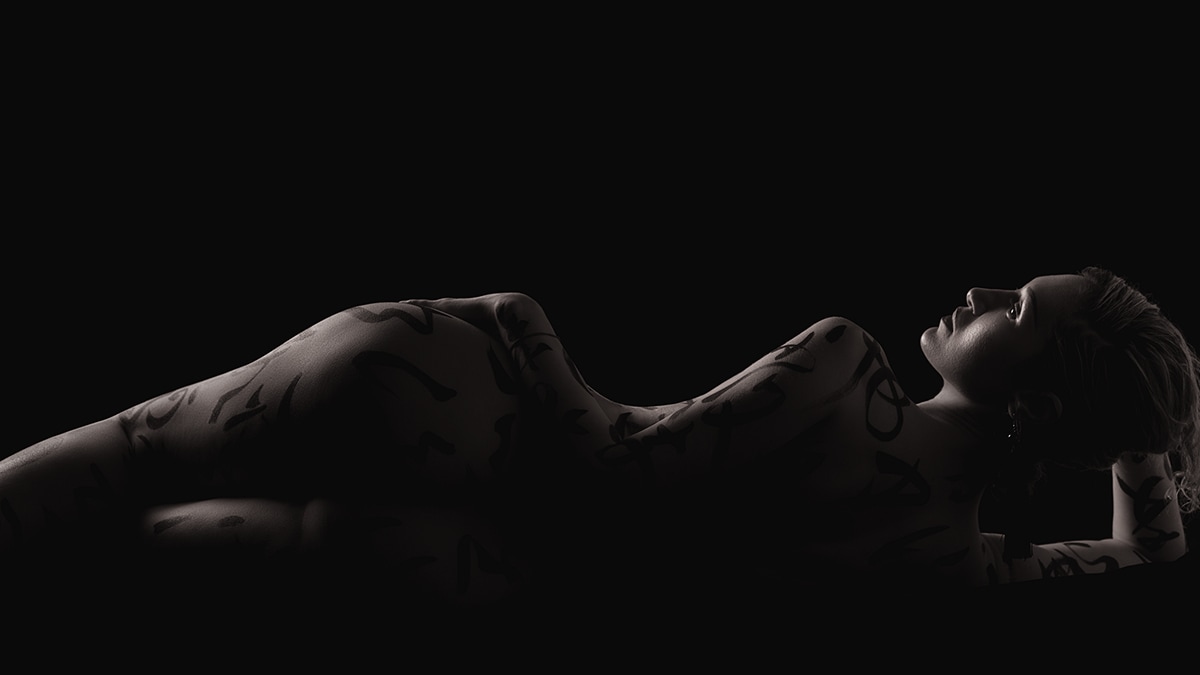


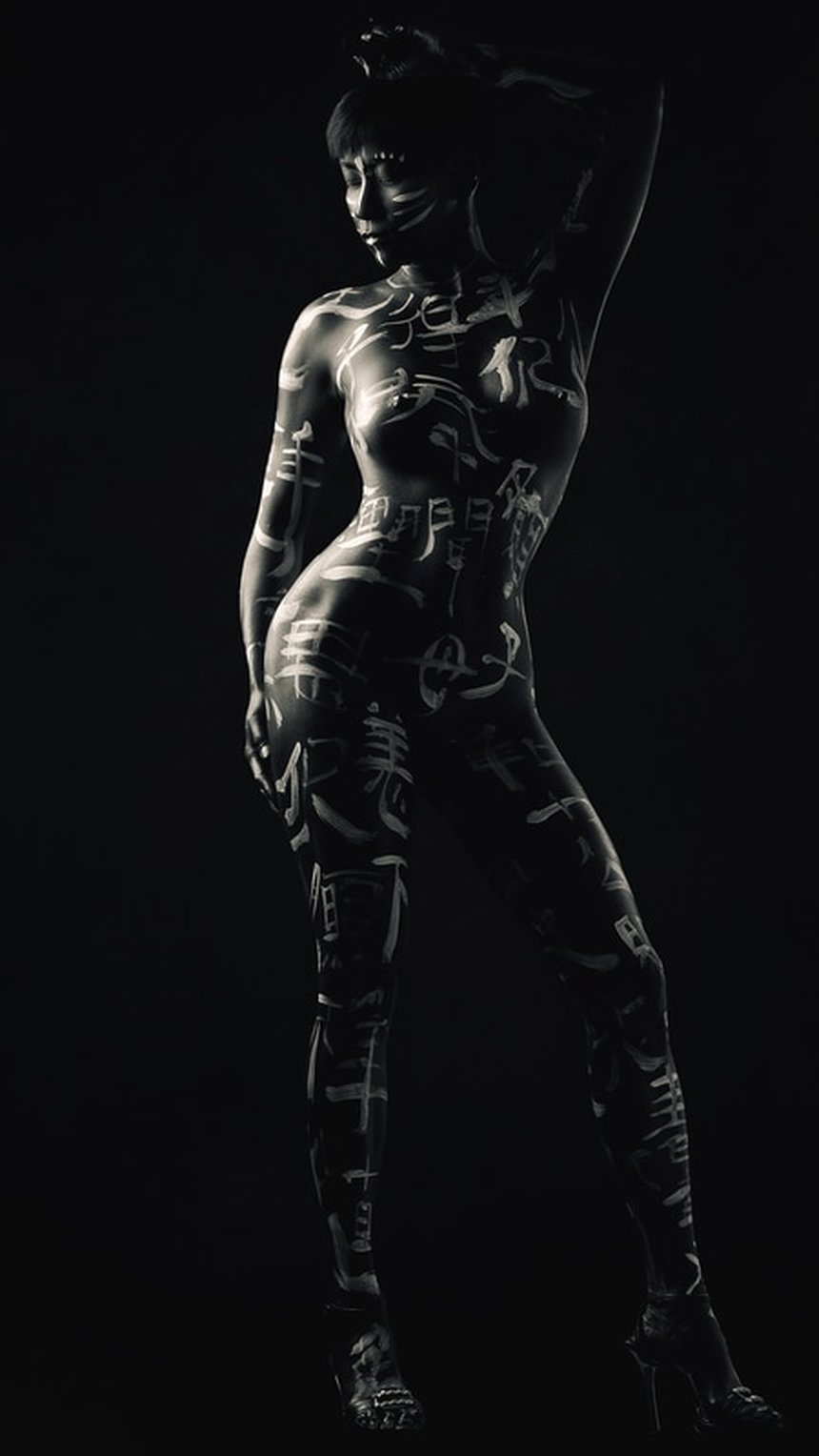





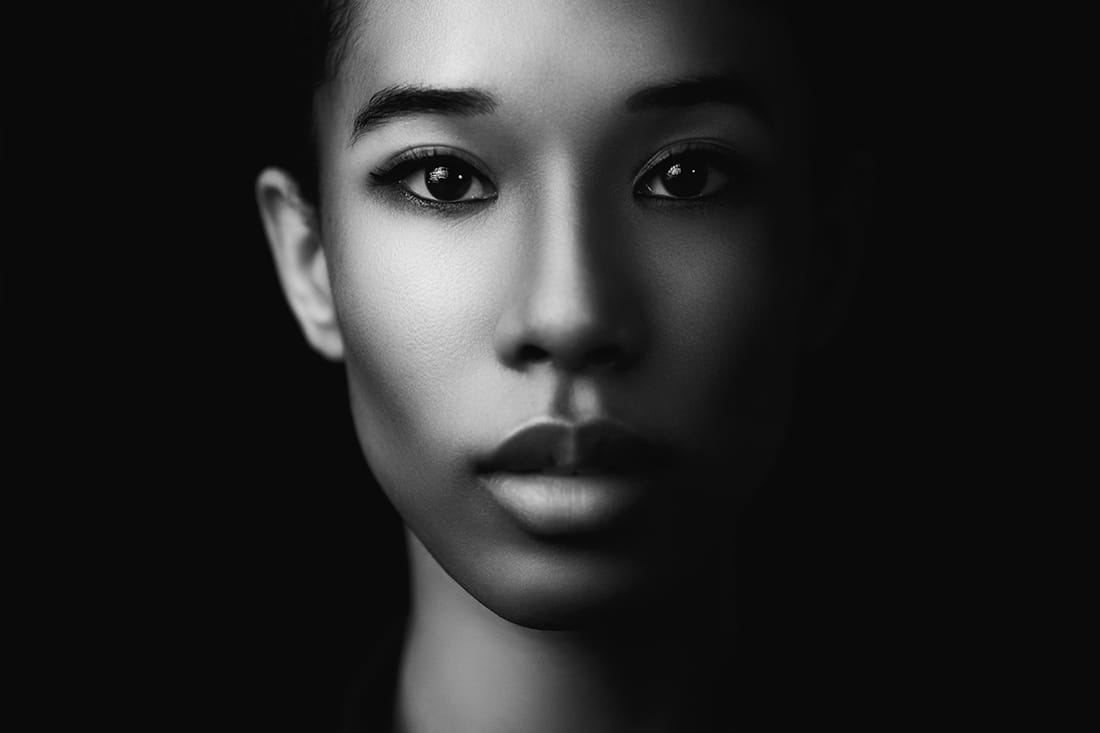

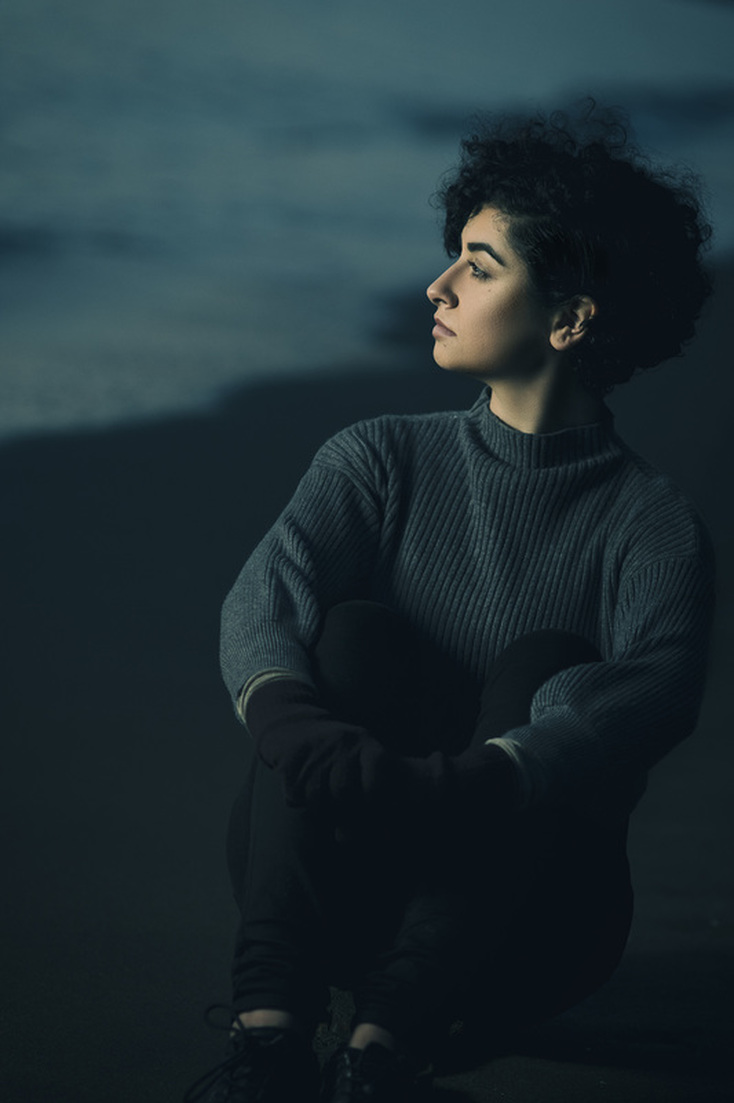
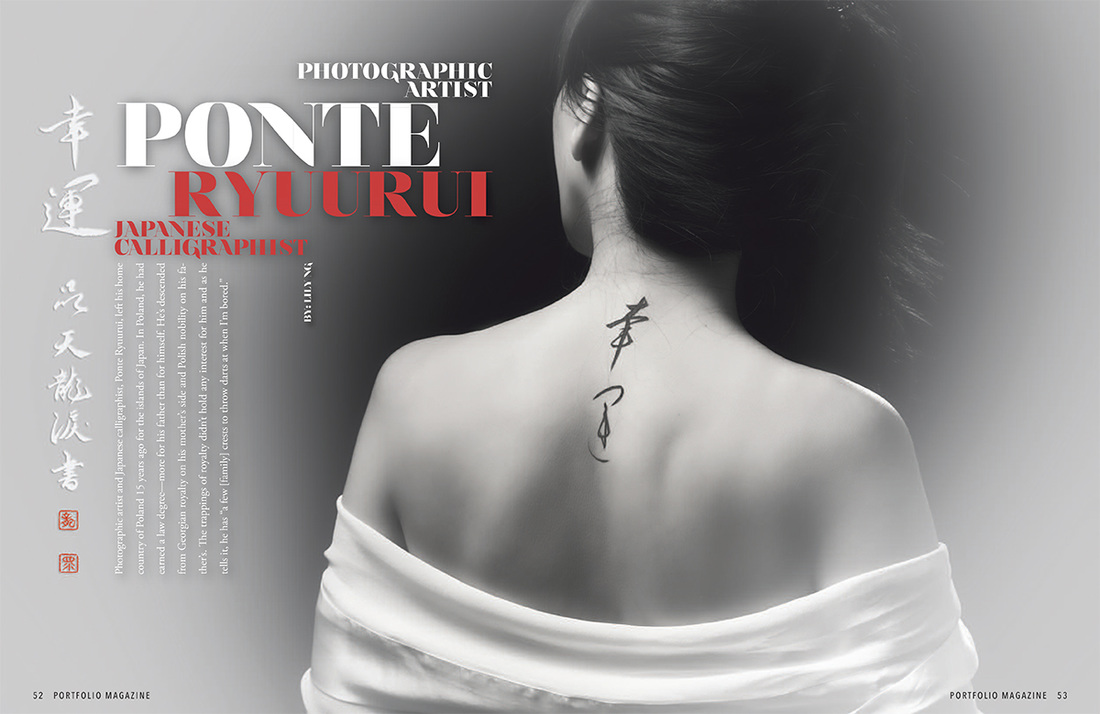


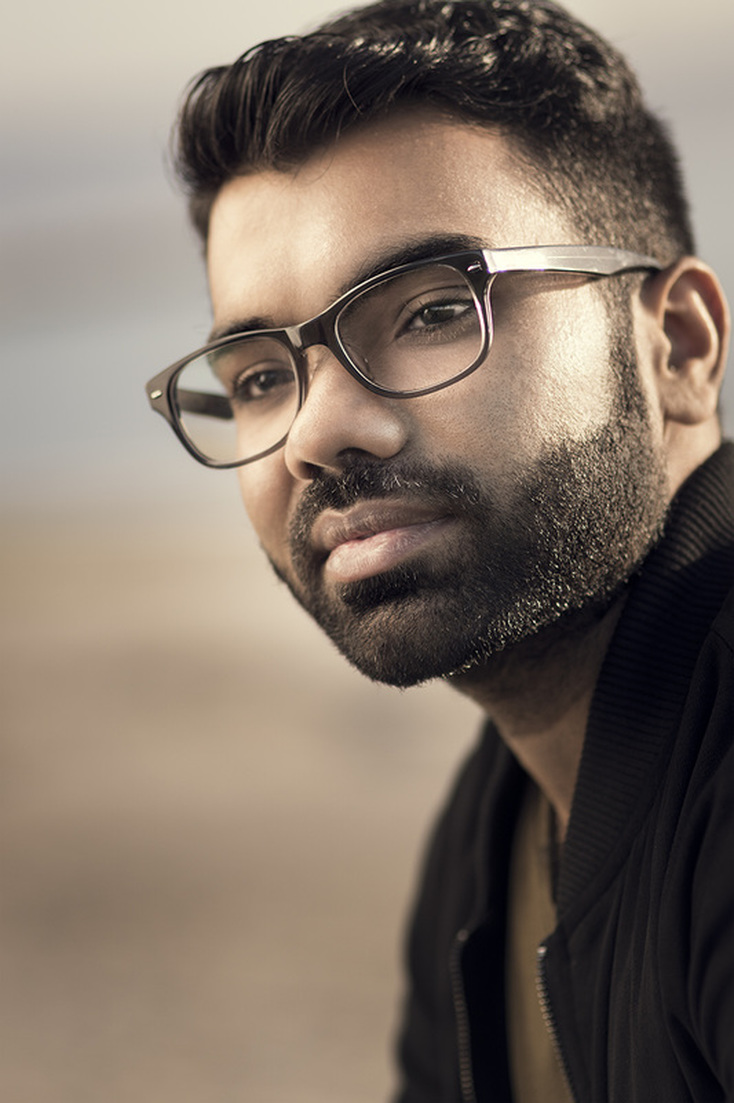

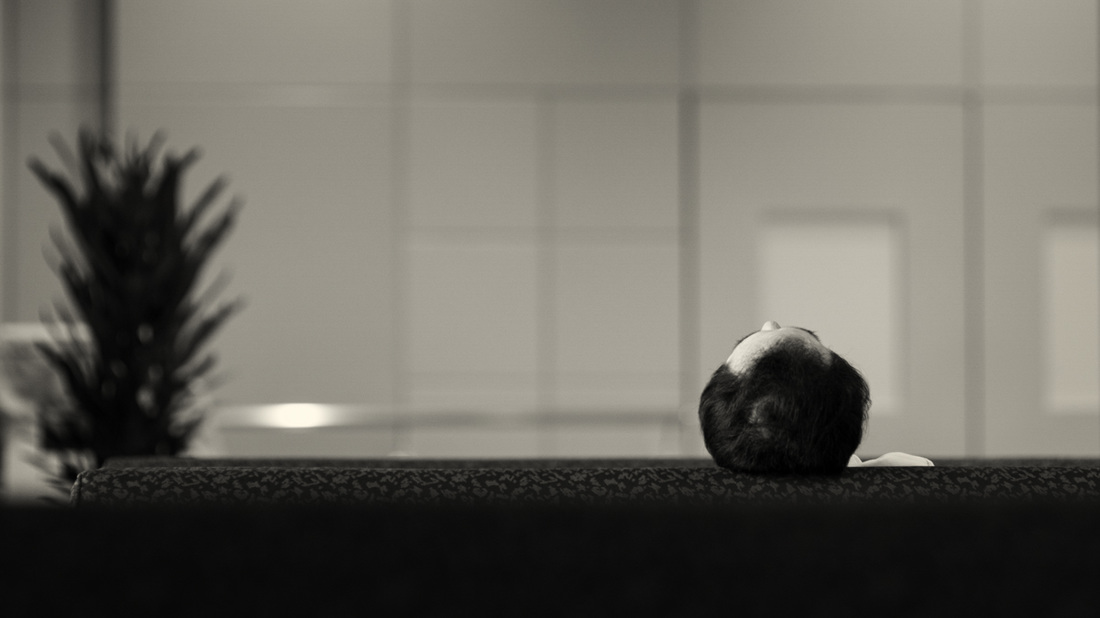

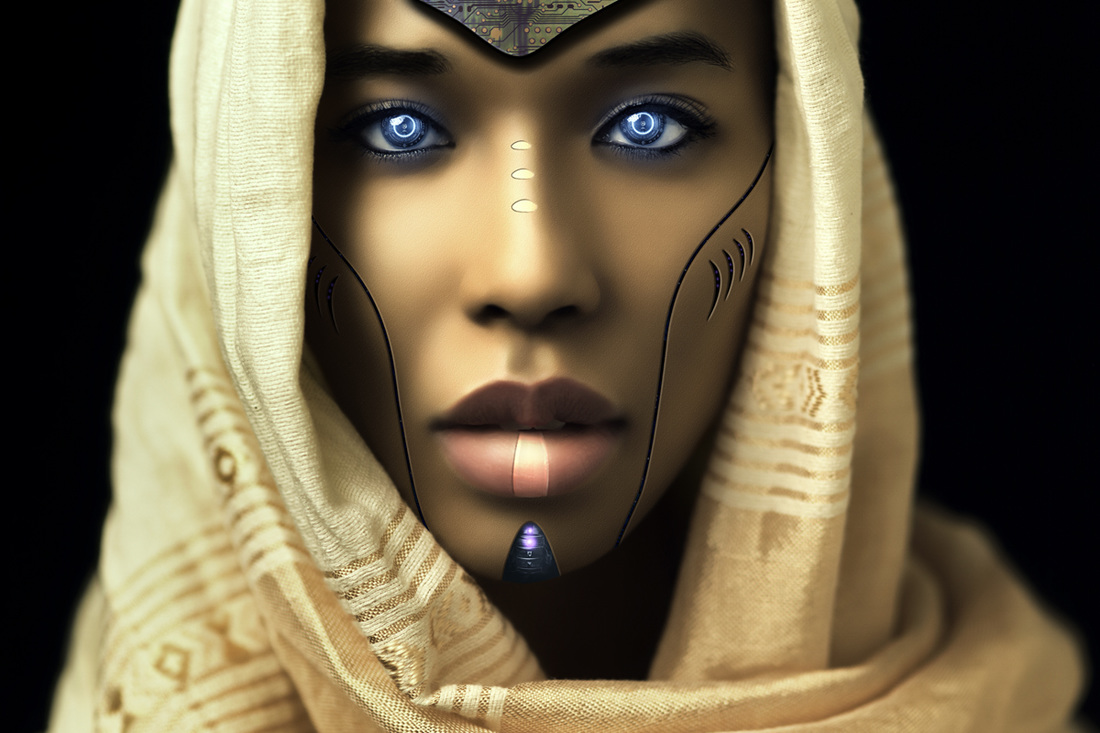
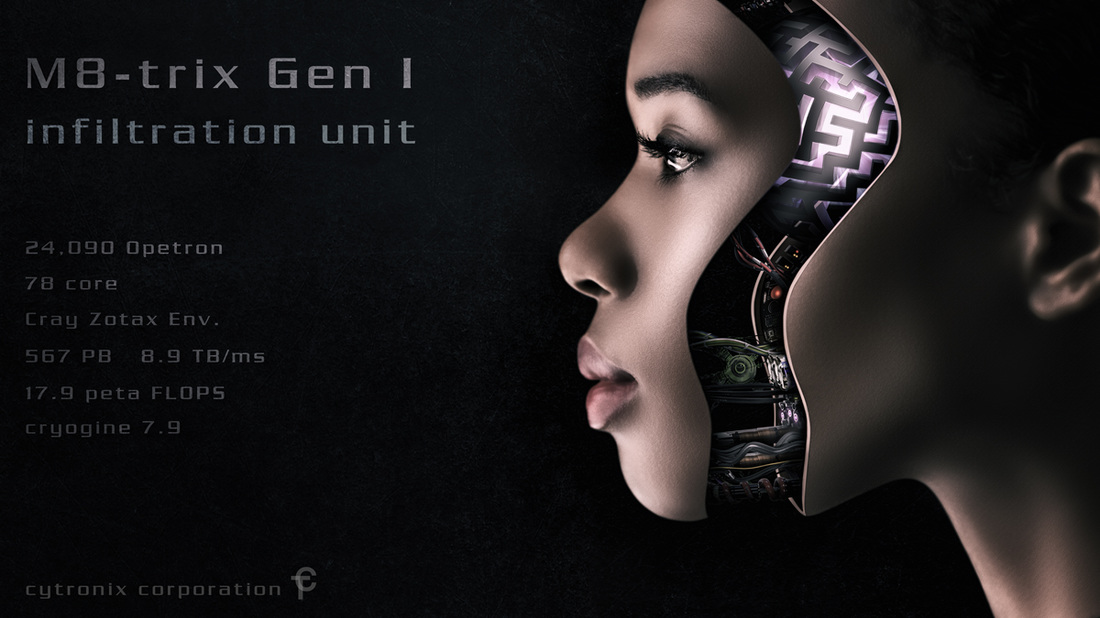
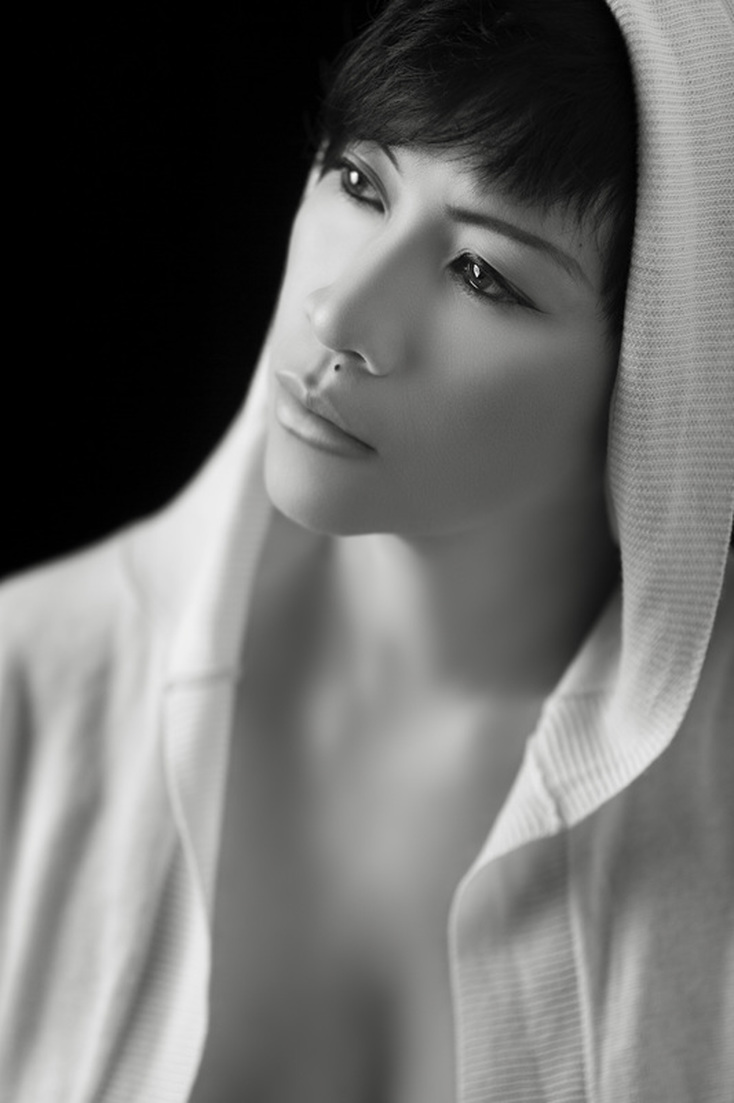
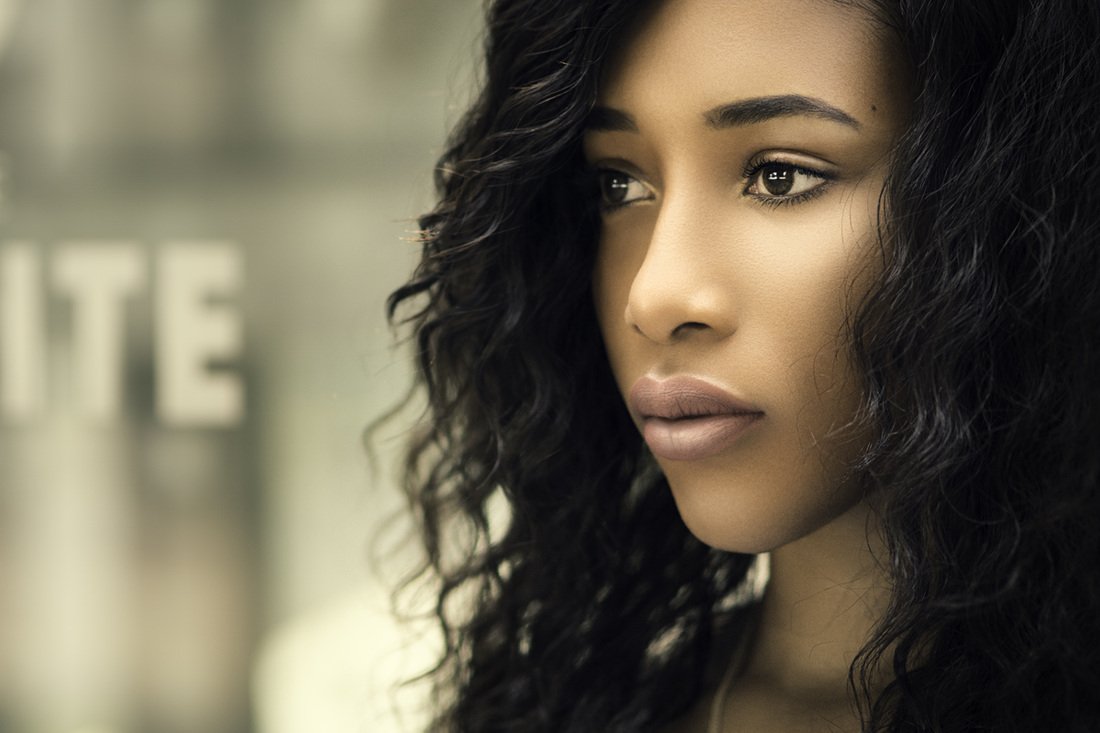
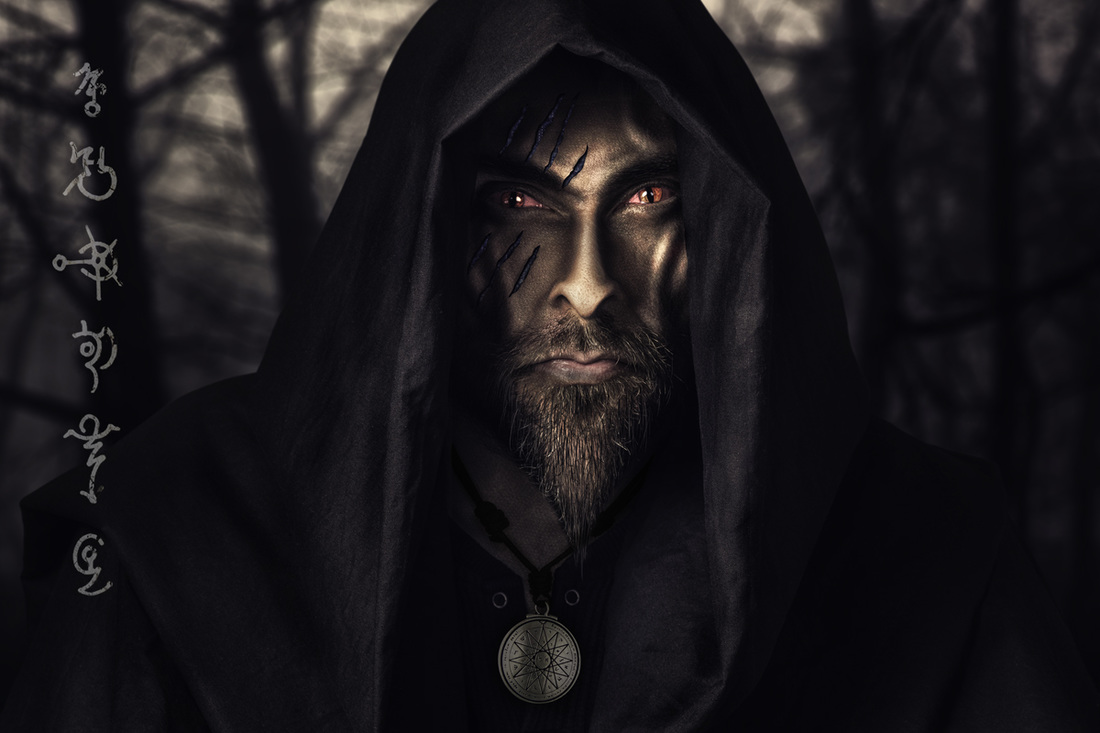


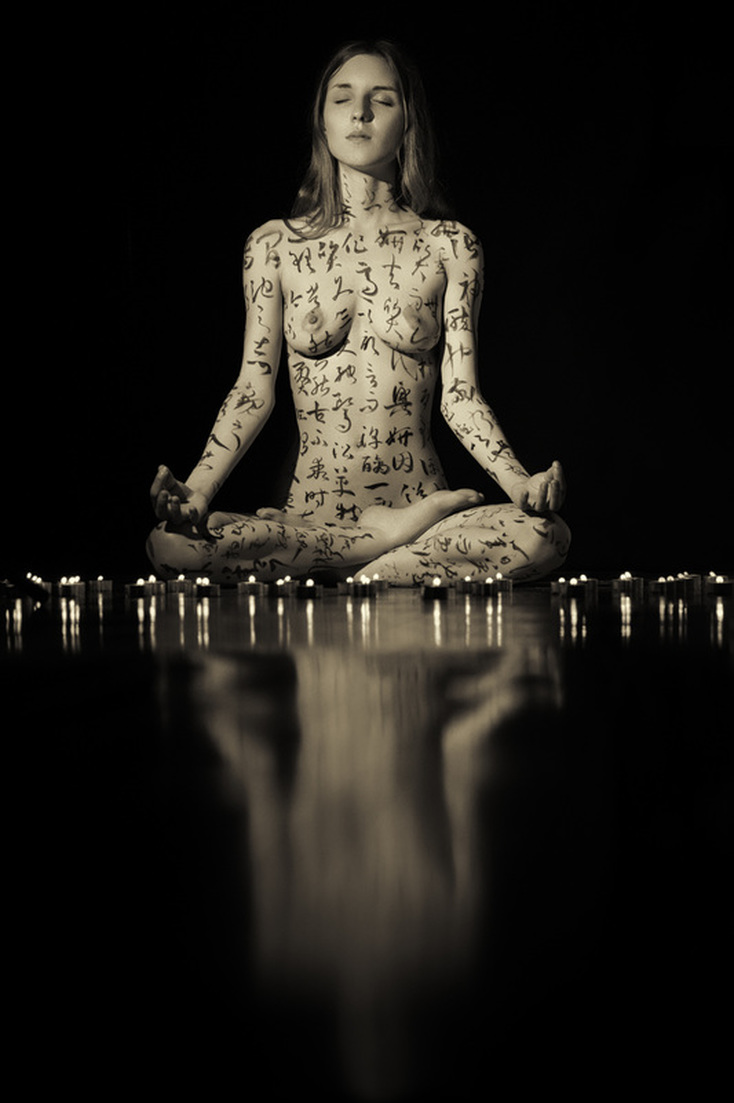
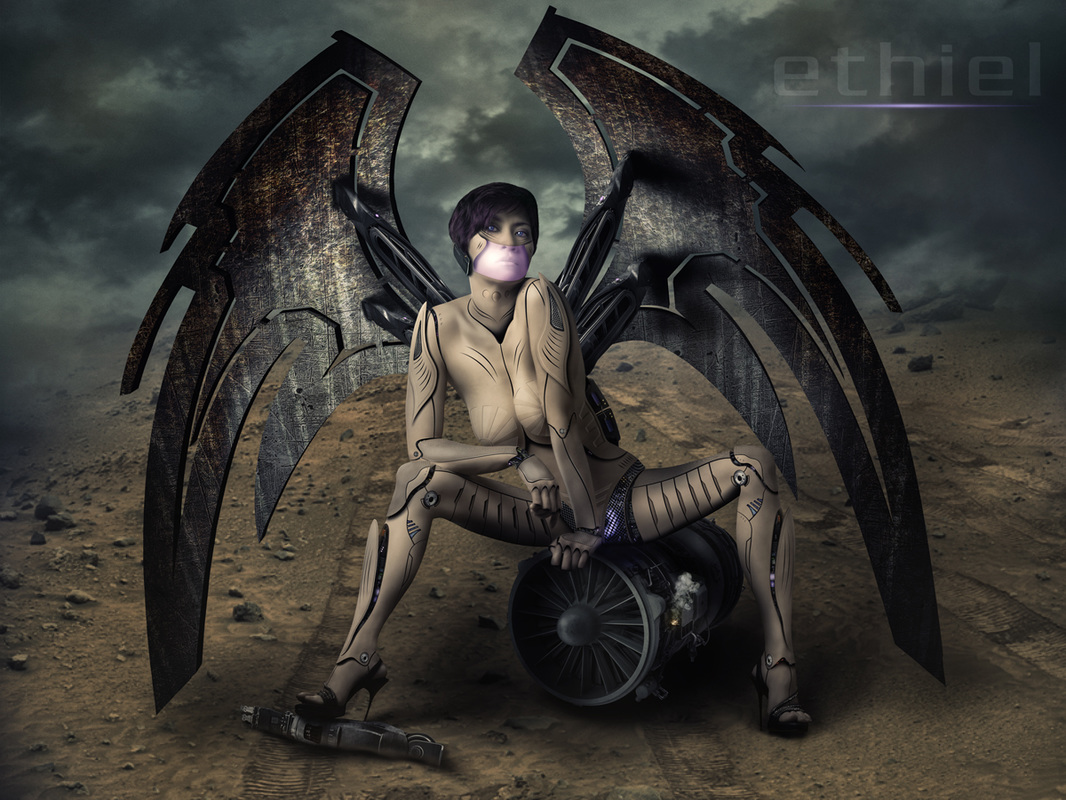

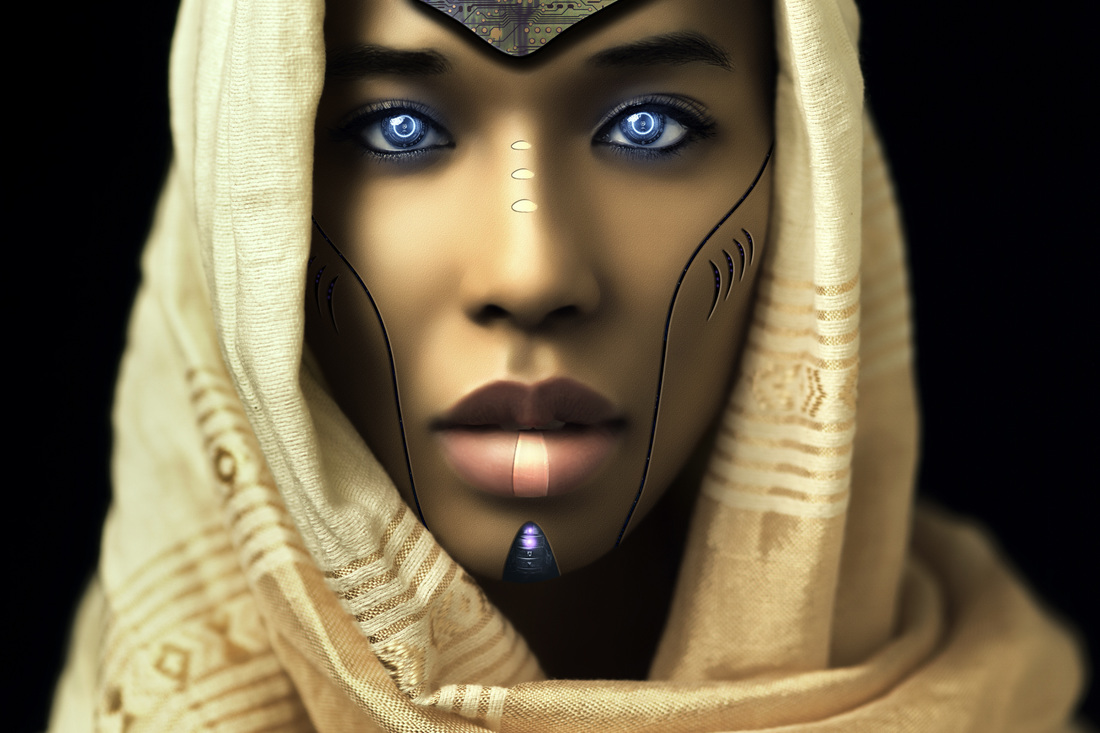

 RSS Feed
RSS Feed